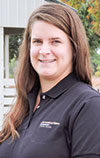With spring work starting and calving season coming to an end for most of us, the last thing on our minds is looking at the old bull pen. However, now is the time to do it.
Even if it’s in the budget this year to buy a new bull, you still need to look at the old-timers and see how their condition looks, since their annual job responsibility is on the horizon.
Production of sperm cells takes 48 days and, depending on your breeding season, you need to start ensuring your bulls are in prime condition two to three months prior to turnout. Ideally, your mature bulls should be in a body condition score (BCS) of 6 at turnout.
This means if they are less than a 6 right now, now is the time to up their ration to increase condition. Because as soon as they are turned out, their number one job of the day will be to breed cows and not find dinner. Your young bulls should have a little higher condition. Most bulls will lose 100 to 200 pounds by the end of the breeding season, so it is important to start them out at a place where they can afford that loss without detrimental effects. Even if you are purchasing a new bull this year, you need to consider the condition he is coming to you in. You may have to increase his ration to put a few extra pounds on him before turning out.
All bulls should also have an annual breeding soundness exam performed. This exam tests a bull’s likelihood of establishing pregnancy in open, healthy, cycling cows and heifers. This exam has four parts: physical exam, scrotal circumference, sperm motility and sperm morphology. If they are successful in their exam, a mature bull should be able to cover up to 30 cows in a season, whereas younger bulls should be able to breed 15 to 20 females.
In addition to nutrition and a breeding soundness exam, you need to examine your bulls for any other issues. The condition of their feet and legs can significantly impact their ability to breed and mount cows. If they have long toes, weak legs or any other lameness issues, those should be addressed or the bull replaced before the breeding season begins. You need bulls that can cover a lot of country to find cycling cows and breed them efficiently for a successful breeding season.







